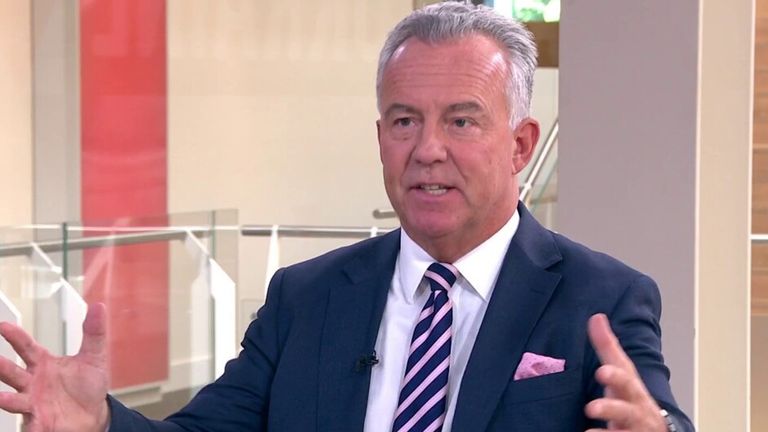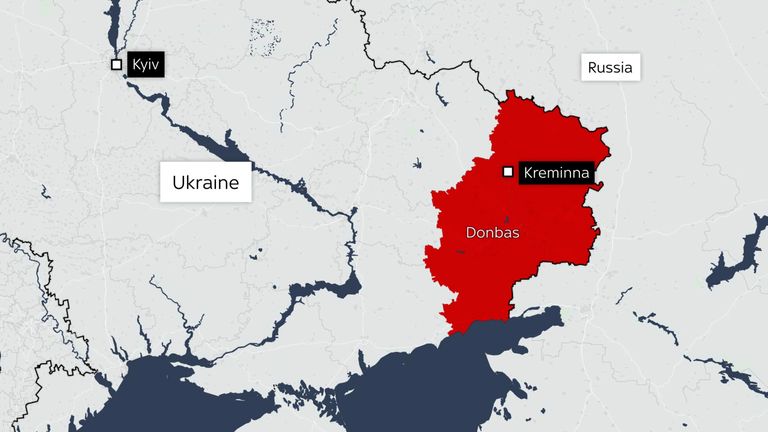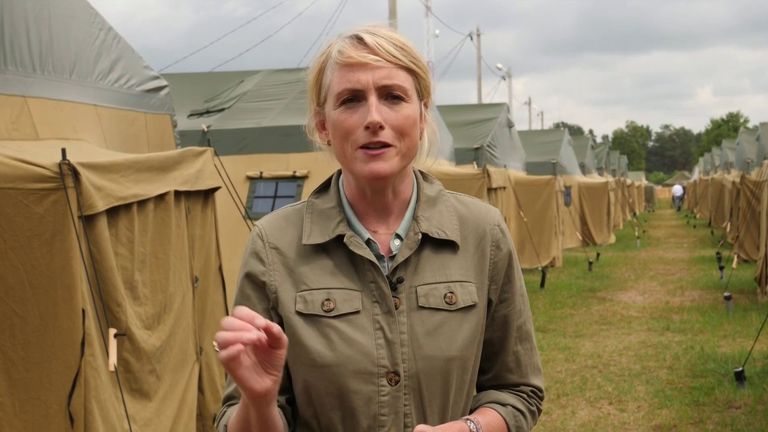President Volodymyr Zelenskyy and his Ukrainian military forces have proven incredibly resilient against what should – at least on paper – have been a superior Russian force.
But one month on from the start of a much-anticipated “spring” counteroffensive, there has been limited positive news from Kyiv, plenty of Russian reporting of significant enemy losses, and no evidence of a breakthrough.
Zelenskyy marks 500 days of war – live updates
With both sides embroiled in a highly attritional phase of the war, is Ukraine facing the brutal reality they do not have the resources to overcome established Russian defences, or is patience a vital component of its strategy?
Military offensives usually require detailed planning, but success is usually achieved by seizing the initiative, exploiting fleeting opportunities to capitalise on enemy weakness or misjudgement, and gaining momentum before the enemy has the chance to consolidate.
However, Ukraine is heavily dependent on the West for weapons and ammunition. Mr Zelenskyy needed advanced weaponry from the West to support the Ukrainian counteroffensive – such as modern tanks, long-range precision strike and air defence capability.
But it took time for this equipment to arrive, and for crucial operational training to be completed.
Zelenskyy created ‘air of expectation’
Unlike in the northeast of Ukraine (Kharkiv) where a surprise offensive last September reclaimed around 12,000 square kilometres of previously Russian-occupied territory in a very short period, on this occasion Russia has had months of advance notice to prepare its defences.
Mr Zelenskyy has – perhaps inadvertently – created an “air of expectation” in the West of a swift and decisive victory.
Russia has established hundreds of kilometres of layered defences, including anti-tank ditches, “dragon’s teeth” defensive barricades, and mines.
These are all surmountable, but creating clear corridors through minefields simply funnels attacking forces into predictable channels, which can have deadly consequences. As chairman of the US joint chiefs of staff General Mark Milley advised, the Ukrainian offensive will be “slow, and it will be bloody”.
Read more:
Is this where Wagner Group fighters could be based in Belarus?
New satellite images show unidentifiable shapes at Zaporizhzhia nuclear plant
Ukraine must avoid war of attrition
In the battle for Bakhmut, Russian forces on offence were suffering up to 10 times the casualties of the Ukrainian defenders. But even with Western support, in this initial phase of the counteroffensive Ukraine will expect to suffer three times the casualties of the Russian forces. This will present a huge challenge to Ukrainian morale.
And, Ukraine must avoid an enduring war of attrition that will – eventually – favour the larger Russian force.
Meanwhile, the enemy also “has a vote”, as former US defence secretary James Mattis likes to say, and Russia will not sit back and let Ukraine seize the initiative.
Vladimir Putin’s “special military operation” remains focused on the Donbas, and there are reports suggesting thousands of Russian forces are massing ready for an attack in the Kreminna area.
This would be a vital steppingstone for Russia to seizing the Donbas, and would create a conundrum for Ukraine: divert forces to protect the Donbas, or capitalise on Russia’s dilution of its defensive capability in the south.
Click to subscribe to Ukraine War Diaries wherever you get your podcasts
The counteroffensive is a critical moment for Ukraine. Western support is not unlimited, there are limited supplies of high-tech weapons available, and domestic pressures on Western governments have not abated.
Ukraine needs to find a way to break through the Russian minefields, and fast. Cluster munitions could be the ideal solution – the US has large stockpiles, and they do not require time-consuming training.
However, cluster munitions are banned by 120 countries (including the UK). As some of them don’t detonate on impact, they leave large quantities of unexploded bombs, which present a major threat to civilians.
Over 98% of the injuries caused by cluster munitions are to civilian populations in the decades after their use.
However, neither the US nor Ukraine are signatories to the ban, and Ukraine desperately needs help.
Further, the outcome of the US presidential elections next year might also impact Western support for Ukraine, so Mr Zelenskyy will know this year’s counteroffensive could be crucial to the outcome of the war.
Ukrainian success will probably be defined by territory liberated rather than Russian forces destroyed, but Ukraine has yet to achieve momentum, and risks losing the initiative.
Only Mr Zelenskyy and his leadership team will know if their strategy is working, and patience may yet prove a virtue. Ukraine has yet to commit the bulk of its forces. If and when a breakthrough is achieved, it could prove decisive.
But Ukraine faces a huge challenge, and success is not a foregone conclusion.



